Current Lab Members.
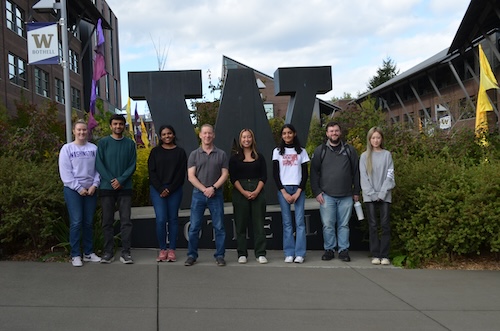
Intelligent Networks Lab members for fall 2024: (left to right) Marina Rosenwald, Avikant Wadhwa, Hari Priya Dhanasekaran, Michael Stiber, Vanessa Arndorfer, Rimjhim Sudhesh, Nicholas Posey, Siqiao Ye. Members not pictured: Jasleen Kaur Saini and Zaina Shaikh, Divya Kamath, and Nayana Yeshlur.
Students.
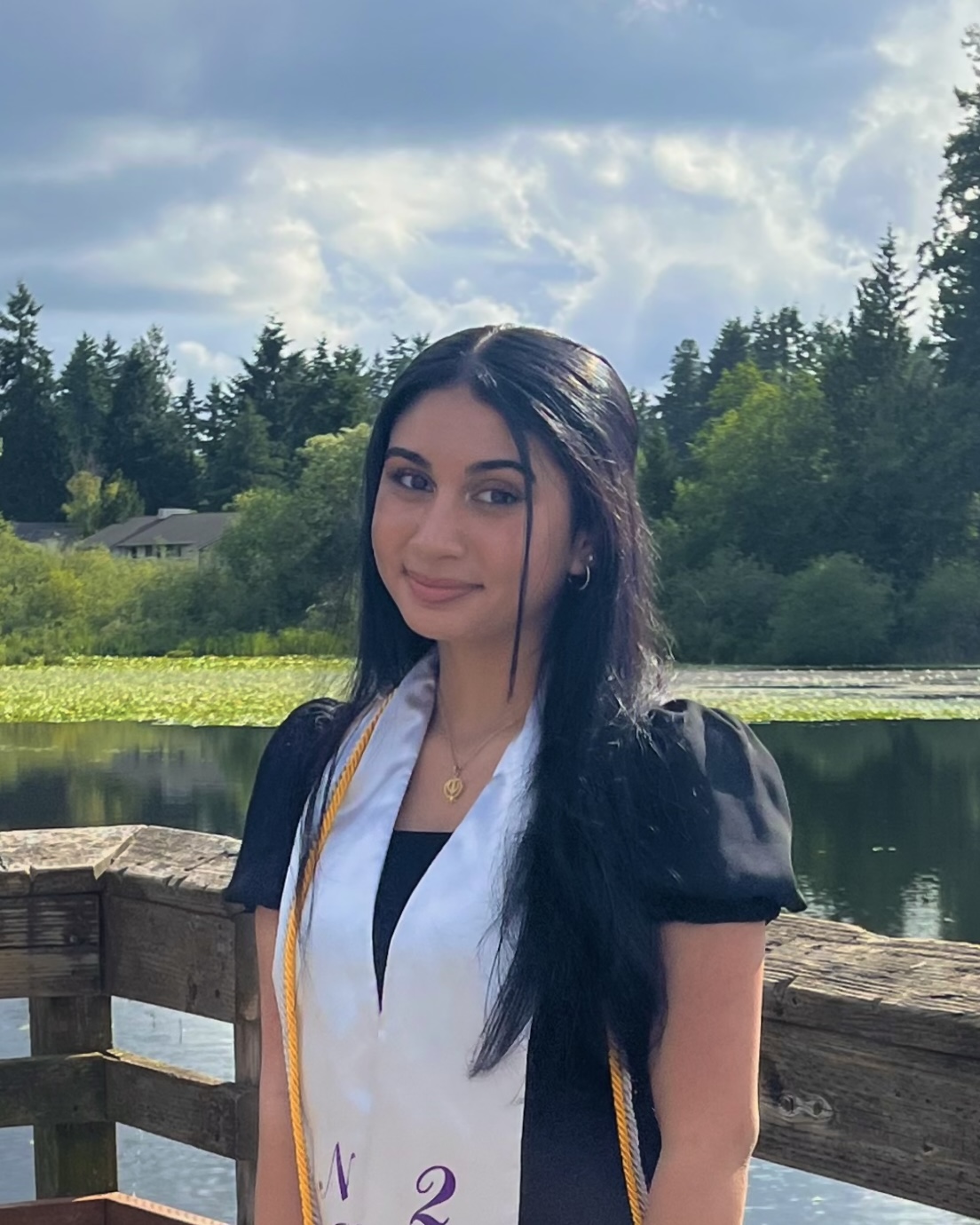 Jasleen Kaur Saini is an undergraduate student pursuing a Bachelor's degree in Computer Science and Software Engineering. Her research focuses on synthetic parameterized graph generation for Next-Generation 911 simulations. She is interested in software development, information technology, and cybersecurity.
Jasleen Kaur Saini is an undergraduate student pursuing a Bachelor's degree in Computer Science and Software Engineering. Her research focuses on synthetic parameterized graph generation for Next-Generation 911 simulations. She is interested in software development, information technology, and cybersecurity.
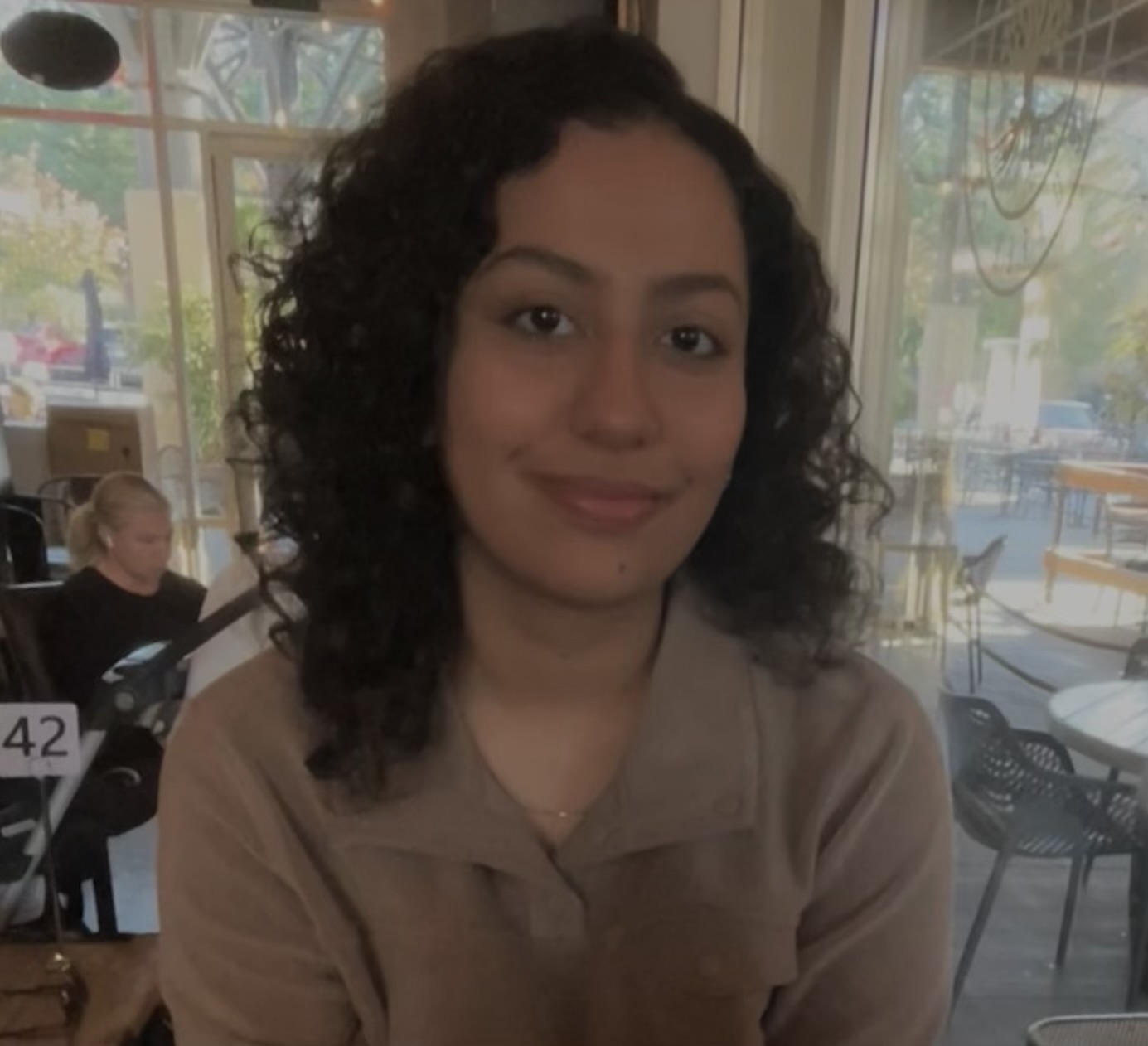 Zaina Shaikh is an undergraduate student pursuing a Bachelor's degree in Computer Science and Software Engineering. Her research focuses on scalable parameterized graph generation for Next Generation 911 (NG911) simulations. She is particularly interested in software engineering, data science, and machine learning.
Zaina Shaikh is an undergraduate student pursuing a Bachelor's degree in Computer Science and Software Engineering. Her research focuses on scalable parameterized graph generation for Next Generation 911 (NG911) simulations. She is particularly interested in software engineering, data science, and machine learning.
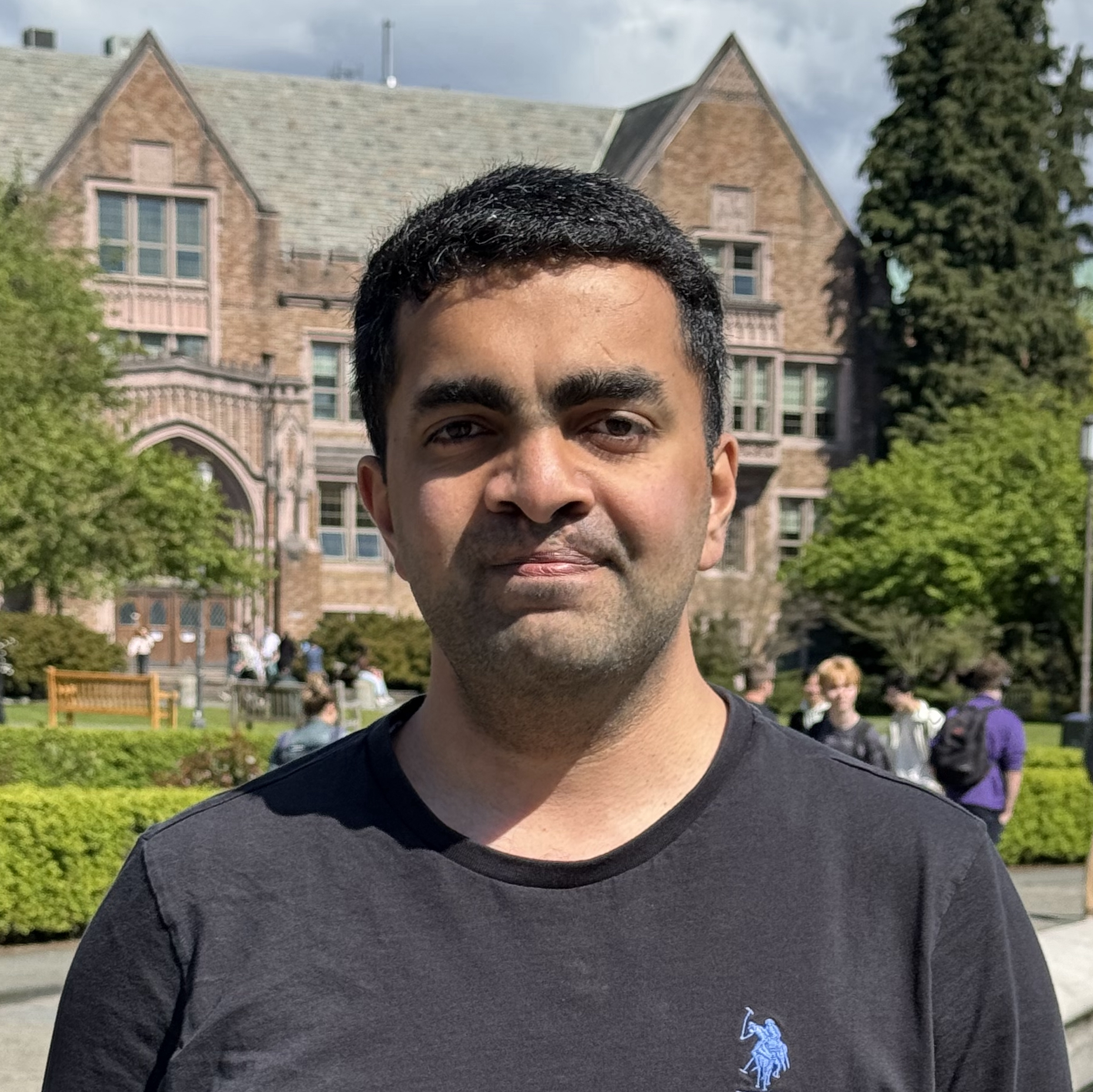 Manu Hegde is a Computer Science graduate student with interests
at the intersection of neural networks and high-performance
computing. He is contributing towards the implementation
aspects of the Graphitti project.
Manu Hegde is a Computer Science graduate student with interests
at the intersection of neural networks and high-performance
computing. He is contributing towards the implementation
aspects of the Graphitti project.
 Rimjhim Sudhesh is an undergraduate student studying Computer Science. She is focusing on the ESCS aspect, specifically predicting primary emergency events based on the secondary process. Her interests include machine learning and artificial intelligence.
Rimjhim Sudhesh is an undergraduate student studying Computer Science. She is focusing on the ESCS aspect, specifically predicting primary emergency events based on the secondary process. Her interests include machine learning and artificial intelligence.
 Avikant Wadhwa is a graduate student pursuing a Master's in Computer Science and Software Engineering. As part of his Master's thesis, he is working on approaches for code migration from CPU to GPU in the simulation domain. His interests include computational methods, distributed systems, software design, and architecture.
Avikant Wadhwa is a graduate student pursuing a Master's in Computer Science and Software Engineering. As part of his Master's thesis, he is working on approaches for code migration from CPU to GPU in the simulation domain. His interests include computational methods, distributed systems, software design, and architecture.
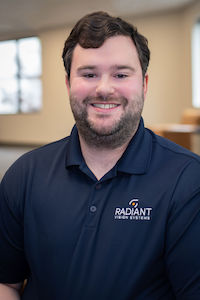 Nick Posey is a graduate student pursuing a Master's degree in Computer Science and Software Engineering at the University of Washington Bothell. He received his BS in Physics from University of Washington Seattle and the GCSDD certificate from University of Washington Bothell. His interests include machine learning, artificial intelligence, and high-performance computing.
Nick Posey is a graduate student pursuing a Master's degree in Computer Science and Software Engineering at the University of Washington Bothell. He received his BS in Physics from University of Washington Seattle and the GCSDD certificate from University of Washington Bothell. His interests include machine learning, artificial intelligence, and high-performance computing.
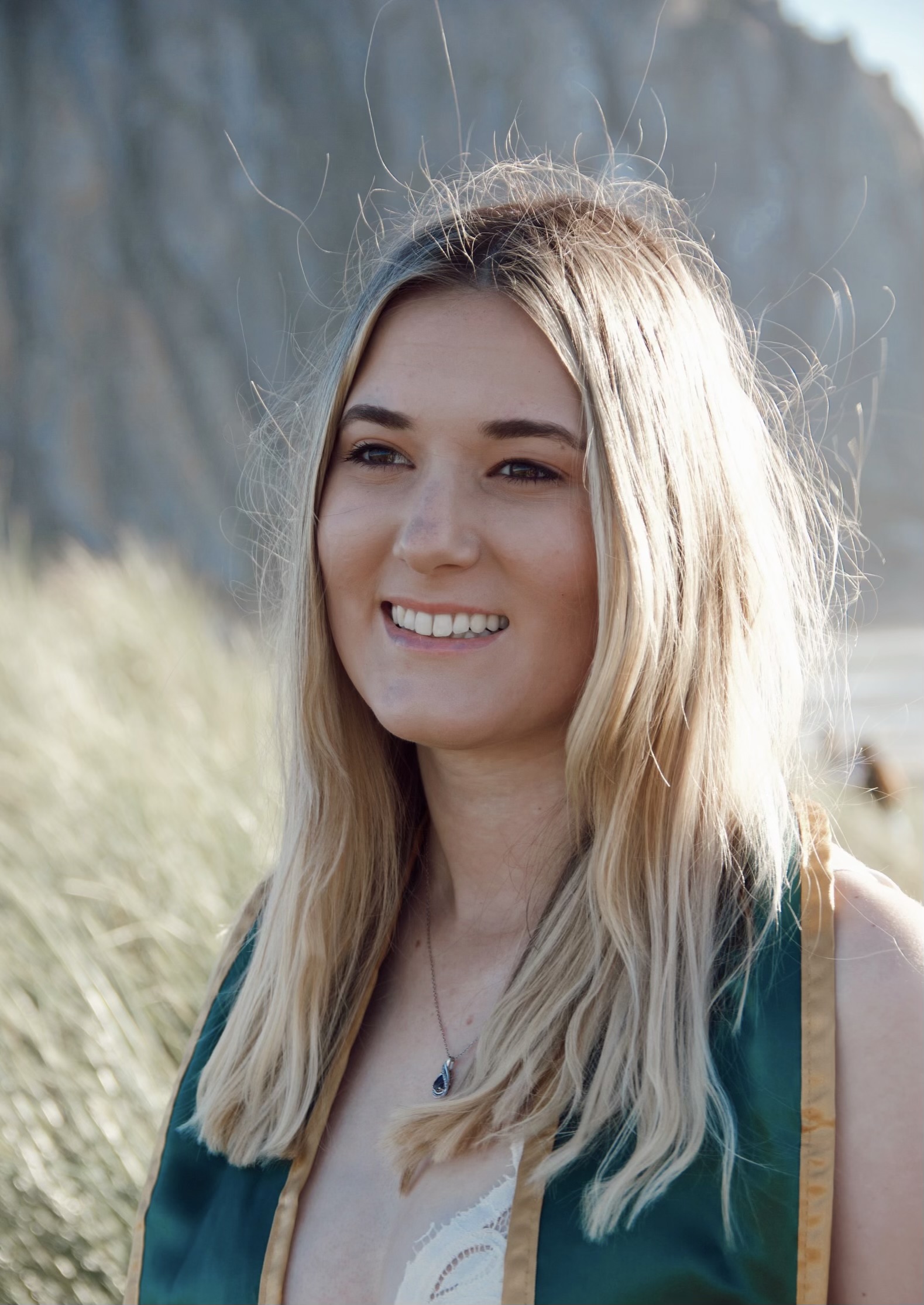 Marina Rosenwald is a graduate student pursuing a Master's
degree in Computer Science and Software Engineering. Her research
is with the lab's Computational Neuroscience project, focusing on
growth simulations and graphing of neural networks. She holds a
bachelor's degree in Computer Science from California Polytechnic
State University, SLO. Her interests include machine learning,
artificial intelligence, and mathematics.
Marina Rosenwald is a graduate student pursuing a Master's
degree in Computer Science and Software Engineering. Her research
is with the lab's Computational Neuroscience project, focusing on
growth simulations and graphing of neural networks. She holds a
bachelor's degree in Computer Science from California Polytechnic
State University, SLO. Her interests include machine learning,
artificial intelligence, and mathematics.
 Siqiao Ye is a graduate student pursuing a Master's degree in Computer Science and Software Engineering. Her project focuses on developing a real-time incident classification system for Emergency Services Communication Systems (ESCS) using machine learning techniques to analyze and classify emergency calls based on metadata.
Siqiao Ye is a graduate student pursuing a Master's degree in Computer Science and Software Engineering. Her project focuses on developing a real-time incident classification system for Emergency Services Communication Systems (ESCS) using machine learning techniques to analyze and classify emergency calls based on metadata.
Faculty.
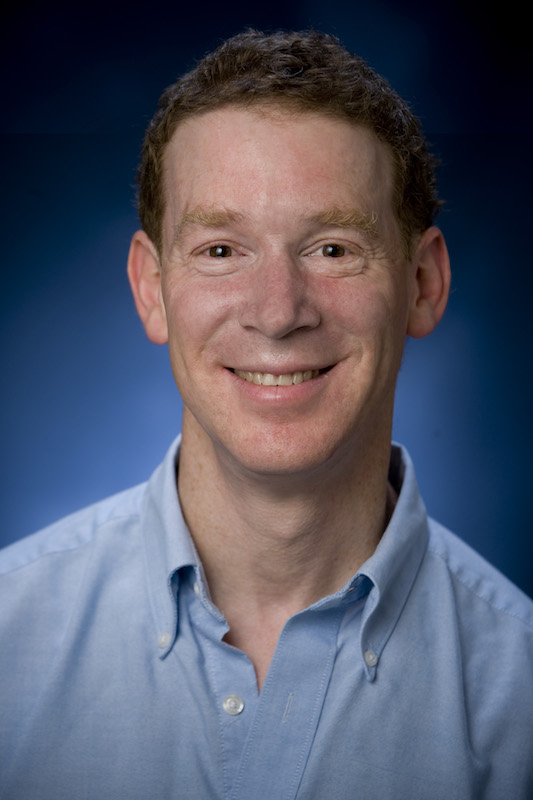 Michael Stiber, Laboratory Director,
Professor of Computing & Software Systems, UW Bothell School of
STEM. Prof. Stiber has more than 30 years' experience in artificial
intelligence, computational science, and high-performance computing,
including extensive collaborations with natural scientists,
information scientists, engineers, and mathematicians. He has
developed software to support simulation and data analysis for a
wide range of platforms.
Michael Stiber, Laboratory Director,
Professor of Computing & Software Systems, UW Bothell School of
STEM. Prof. Stiber has more than 30 years' experience in artificial
intelligence, computational science, and high-performance computing,
including extensive collaborations with natural scientists,
information scientists, engineers, and mathematicians. He has
developed software to support simulation and data analysis for a
wide range of platforms.
Alumni.
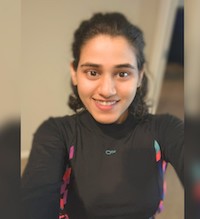 Divya Kamath graduated with a master's in Computer Science and Software Engineering from the University of Washington Bothell (UWB). She worked on migrating Graphitti to modern C++ standards, which included bringing the compiler to C++17 standards, changing dynamically allocated arrays to vectors, and using smart pointers among other improvements. She also leveraged templated to upgrade the factory design pattern of Graphitti to an abstract factory design pattern. Her contribution also paved the way to easily serialize and deserialize all the objects in Graphitti using the Cereal library. In her leisure time, Divya enjoys swimming and experimenting with vegan cooking recipes.
Divya Kamath graduated with a master's in Computer Science and Software Engineering from the University of Washington Bothell (UWB). She worked on migrating Graphitti to modern C++ standards, which included bringing the compiler to C++17 standards, changing dynamically allocated arrays to vectors, and using smart pointers among other improvements. She also leveraged templated to upgrade the factory design pattern of Graphitti to an abstract factory design pattern. Her contribution also paved the way to easily serialize and deserialize all the objects in Graphitti using the Cereal library. In her leisure time, Divya enjoys swimming and experimenting with vegan cooking recipes.
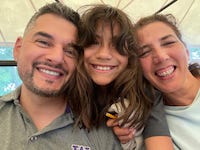 After earning
a BS in Agricultural Science from EARTH University in Costa Rica,
Jardi Martinez Jordan transitioned to Software Engineering in 2021, completing a Graduate Certificate in Software Design and Development from the University of Washington - Bothell. Currently pursuing a Master's in Computer Science and Software Engineering, Jardi completed internships at NASA's Kennedy Space Center, focusing on functional testing of the Launch Control System's event bus. His Master's thesis involves developing mathematical and algorithmic models for simulating Emergency Services Communication Systems (ESCS). Prospectively, Jardi aspires to integrate his dual passions for nature and technology into a harmonious vocation.
After earning
a BS in Agricultural Science from EARTH University in Costa Rica,
Jardi Martinez Jordan transitioned to Software Engineering in 2021, completing a Graduate Certificate in Software Design and Development from the University of Washington - Bothell. Currently pursuing a Master's in Computer Science and Software Engineering, Jardi completed internships at NASA's Kennedy Space Center, focusing on functional testing of the Launch Control System's event bus. His Master's thesis involves developing mathematical and algorithmic models for simulating Emergency Services Communication Systems (ESCS). Prospectively, Jardi aspires to integrate his dual passions for nature and technology into a harmonious vocation.
 Chenghao Hsu is an undergraduate student at the University of
Washington - Bothell, majoring in Computer Science and Software Engineering.
Their capstone project focuses on Graphitti, specifically implementing
a re-engineered HDF5 Recorder.
Chenghao Hsu is an undergraduate student at the University of
Washington - Bothell, majoring in Computer Science and Software Engineering.
Their capstone project focuses on Graphitti, specifically implementing
a re-engineered HDF5 Recorder.
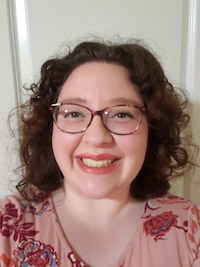 Natalie
Gonzales is an undergraduate student pursuing a Bachelor's degree in
Biology and a Minor in Neuroscience at UWB. She is investigating
Spike-Timing-Dependent Plasticity with BrainGrid+Workbench and plans
to explore more applications of biology to assist people in their
everyday lives. She is excited to work with the fun and supportive
INL team.
Natalie
Gonzales is an undergraduate student pursuing a Bachelor's degree in
Biology and a Minor in Neuroscience at UWB. She is investigating
Spike-Timing-Dependent Plasticity with BrainGrid+Workbench and plans
to explore more applications of biology to assist people in their
everyday lives. She is excited to work with the fun and supportive
INL team.
 Mark Sorvik is
an undergraduate student pursuing a Bachelor’s degree in Computer
Science and Software Engineering. His research with the Intelligent
Networks Laboratory focuses on the GPU portion of the Graphitti
simulator, including validation of the GPU implementation,
configuration and optimization based on device hardware, and
improving documentation of the Graphitti simulator. His interests
include high performance computing, computer vision, machine
learning, cybersecurity, and virtual and augmented reality.
Mark Sorvik is
an undergraduate student pursuing a Bachelor’s degree in Computer
Science and Software Engineering. His research with the Intelligent
Networks Laboratory focuses on the GPU portion of the Graphitti
simulator, including validation of the GPU implementation,
configuration and optimization based on device hardware, and
improving documentation of the Graphitti simulator. His interests
include high performance computing, computer vision, machine
learning, cybersecurity, and virtual and augmented reality.
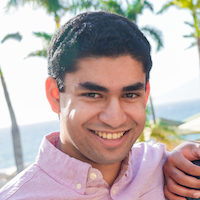 Shakeel
Khan is an undergraduate student pursuing a Bachelor's degree in
Computer Science and Software Engineering at UWB. He is contributing
to the Graphitti Workbench by improving its usability and
functionality and adding to its documentation.
Shakeel
Khan is an undergraduate student pursuing a Bachelor's degree in
Computer Science and Software Engineering at UWB. He is contributing
to the Graphitti Workbench by improving its usability and
functionality and adding to its documentation.
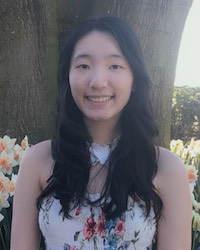 Angelina Tang
is an undergraduate student pursuing a Bachelor’s degree in Computer
Science and Software Engineering and a minor in Business
Administration. As a member of the Intelligent Network Laboratory,
her research aims to develop educational software on web-based
neural networks. This project will be used in a Discovery Core
course that targets freshman to help them understand the technology
surrounding emulating the human mind and further steps they can take
to learn more.
Angelina Tang
is an undergraduate student pursuing a Bachelor’s degree in Computer
Science and Software Engineering and a minor in Business
Administration. As a member of the Intelligent Network Laboratory,
her research aims to develop educational software on web-based
neural networks. This project will be used in a Discovery Core
course that targets freshman to help them understand the technology
surrounding emulating the human mind and further steps they can take
to learn more.
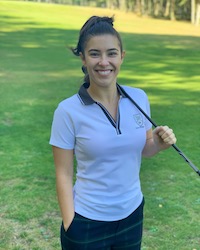 Victoria
(Tori) Salvatore is currently working on her Master of Science in
Computer Science & Software Engineering. She is a research assistant
for Dr. Stiber, who was recently awarded a grant from the National
Security Agency to model the resilience of our next-generation 911
system in the face of a crisis. This research project serves as a
proof-of-concept for applying BrainGrid, the internally developed
neural connectivity simulator, to many different graph-based
problems. To facilitate this process, BrainGrid recently underwent a
major refactoring effort by multiple BCL researchers, including
Tori, who intends to eventually use the simulator to model
everything from shipping and logistics patterns, to reaching
critical-masses of restored biodiversity in our changing ocean.
Victoria
(Tori) Salvatore is currently working on her Master of Science in
Computer Science & Software Engineering. She is a research assistant
for Dr. Stiber, who was recently awarded a grant from the National
Security Agency to model the resilience of our next-generation 911
system in the face of a crisis. This research project serves as a
proof-of-concept for applying BrainGrid, the internally developed
neural connectivity simulator, to many different graph-based
problems. To facilitate this process, BrainGrid recently underwent a
major refactoring effort by multiple BCL researchers, including
Tori, who intends to eventually use the simulator to model
everything from shipping and logistics patterns, to reaching
critical-masses of restored biodiversity in our changing ocean.
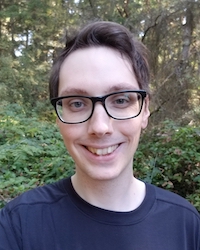 Jordan Brown is a
graduate from UWB with a Bachelor's in Computer Science and Software
Engineering. He contributed to Graphitti by performing validation
testing, setting up automated regression testing, and confirming the
transition of features from BrainGrid. He also cleaned up Graphitti's
output and online documentation.
Jordan Brown is a
graduate from UWB with a Bachelor's in Computer Science and Software
Engineering. He contributed to Graphitti by performing validation
testing, setting up automated regression testing, and confirming the
transition of features from BrainGrid. He also cleaned up Graphitti's
output and online documentation.
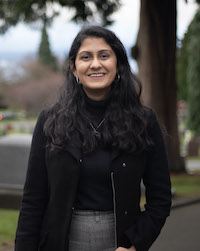 Snigdha Singh
graduated with a master's degree in Computer Science and Software
Engineering from the University of Washington Bothell (UWB). She is
currently working as a software development engineer at Expedia
Group. Her research was focused on studying brain graphs generated
from simulations of nervous systems to develop a better
understanding of biological computation. The topic of her thesis was
"Graph
Analysis For Simulated Neural Network With STDP". She presented
the paper, "Refining connections in developing neural networks"
along with Prof. Michael Stiber and Natalie Gonzales at the 14th
International Neural Coding Workshop. She completed her Bachelor
of Technology in Computer Science and Engineering at Punjab
Engineering College, India in 2019. She is interested in leveraging
computer science to expand the current knowledge about human brains
and use it to solve real-life problems.
Snigdha Singh
graduated with a master's degree in Computer Science and Software
Engineering from the University of Washington Bothell (UWB). She is
currently working as a software development engineer at Expedia
Group. Her research was focused on studying brain graphs generated
from simulations of nervous systems to develop a better
understanding of biological computation. The topic of her thesis was
"Graph
Analysis For Simulated Neural Network With STDP". She presented
the paper, "Refining connections in developing neural networks"
along with Prof. Michael Stiber and Natalie Gonzales at the 14th
International Neural Coding Workshop. She completed her Bachelor
of Technology in Computer Science and Engineering at Punjab
Engineering College, India in 2019. She is interested in leveraging
computer science to expand the current knowledge about human brains
and use it to solve real-life problems.
 Xiang Li is a
graduate student pursuing a Master's degree in Computer Science and
Software Engineering. With a previous graduate certification of
Software Design & Development (GCSDD) in 2021, she successfully
transitioned from a major in physics to her current field of
study. In her research, Xiang is engaged in updating Graphitti's
recorder architecture. Apart from her academic pursuits, she has a
deep passion for reading and cherishes spending quality time with
her children.
Xiang Li is a
graduate student pursuing a Master's degree in Computer Science and
Software Engineering. With a previous graduate certification of
Software Design & Development (GCSDD) in 2021, she successfully
transitioned from a major in physics to her current field of
study. In her research, Xiang is engaged in updating Graphitti's
recorder architecture. Apart from her academic pursuits, she has a
deep passion for reading and cherishes spending quality time with
her children.
 Jewel Lee is a data engineer with the Philips ultrasound R&D
team. After receiving her master's degree in Computer Science and
Software Engineering at UWB, she worked as a software engineer for
the Institute for Systems Biology to develop predictive models using
patient data. Her latest publication "Ambulatory risk
models for long-term risk of sepsis" is the first implementable
ambulatory risk score for prevention of a life-threatening
disease. She is excited about her new role at Philips where she will
be working on using ML and AI to provide insights for production
process and design quality improvements.
Jewel Lee is a data engineer with the Philips ultrasound R&D
team. After receiving her master's degree in Computer Science and
Software Engineering at UWB, she worked as a software engineer for
the Institute for Systems Biology to develop predictive models using
patient data. Her latest publication "Ambulatory risk
models for long-term risk of sepsis" is the first implementable
ambulatory risk score for prevention of a life-threatening
disease. She is excited about her new role at Philips where she will
be working on using ML and AI to provide insights for production
process and design quality improvements.
 Tom Wong was a graduate student studying a master's degree in
Computer Science and Software Engineering at University of
Washington Bothell. He received his B.Eng. in Computer Engineering
at the Hong Kong University of Science and Technology in 2009. He
loves building software and has seven-years' work experience in
software development.
Tom Wong was a graduate student studying a master's degree in
Computer Science and Software Engineering at University of
Washington Bothell. He received his B.Eng. in Computer Engineering
at the Hong Kong University of Science and Technology in 2009. He
loves building software and has seven-years' work experience in
software development.
 Kate Sprague was a
Computer Science Senior at UWB. She worked on enhancing BrainGrid
and other academic software by evaluating freely available software
devolopment tools. In most academic software non-functional
requirements, such as reliability, usability, and maintainability
take a backseat to productivity, and efficiency. Additionally, the
authors of academic software are often students or faculty that have
some programming knowledge, but not necessarily a background in
software engineering. Software development tools can lighten the
workload of researchers by enhancing communication, and integrating
development tasks directly into the workflow (for instance by
regression testing software when a commit is pushed on a github
repository). The goal of Kate's research was to improve the quality
of the toolset associated with the BrainGrid software with regards
to workflow maturity. Through this research she hoped to increase
the quality of academic software in general.
Kate Sprague was a
Computer Science Senior at UWB. She worked on enhancing BrainGrid
and other academic software by evaluating freely available software
devolopment tools. In most academic software non-functional
requirements, such as reliability, usability, and maintainability
take a backseat to productivity, and efficiency. Additionally, the
authors of academic software are often students or faculty that have
some programming knowledge, but not necessarily a background in
software engineering. Software development tools can lighten the
workload of researchers by enhancing communication, and integrating
development tasks directly into the workflow (for instance by
regression testing software when a commit is pushed on a github
repository). The goal of Kate's research was to improve the quality
of the toolset associated with the BrainGrid software with regards
to workflow maturity. Through this research she hoped to increase
the quality of academic software in general.
 Shelby Eaton
is a Software Engineering Consultant at Common Sense
Systems, Inc., a software engineering services firm in
Woodinville, Washington. A 2000 graduate of the CSS program, Ms. Eaton
holds Bachelor of Science degrees in Computing & Software Systems
and in Mathematics. She has recently worked on software for enterprise
information portal customizations and martial arts scoring
systems. She enjoys studying the connections among mathematics,
computer science, and music, especially as it relates to neural
networks.
Shelby Eaton
is a Software Engineering Consultant at Common Sense
Systems, Inc., a software engineering services firm in
Woodinville, Washington. A 2000 graduate of the CSS program, Ms. Eaton
holds Bachelor of Science degrees in Computing & Software Systems
and in Mathematics. She has recently worked on software for enterprise
information portal customizations and martial arts scoring
systems. She enjoys studying the connections among mathematics,
computer science, and music, especially as it relates to neural
networks.
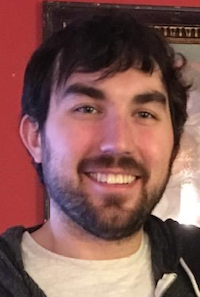 Kyle Dukart is an
undergraduate student pursuing a Bachelor's degree in Computer Science
and Software Engineering. His research with BrainGrid includes
automated code testing, simulation serialization/deserialization, and
enhancing documentation. His interests include object oriented
programming, machine learning, and game design.
Kyle Dukart is an
undergraduate student pursuing a Bachelor's degree in Computer Science
and Software Engineering. His research with BrainGrid includes
automated code testing, simulation serialization/deserialization, and
enhancing documentation. His interests include object oriented
programming, machine learning, and game design.
 Haruka Higuchi, Hanjoo Kim, Hyon Kim, and Kathleen Pollmann
developed a prototype of a "signal computing" software laboratory
for use in undergraduate laboratory classes.
Haruka Higuchi, Hanjoo Kim, Hyon Kim, and Kathleen Pollmann
developed a prototype of a "signal computing" software laboratory
for use in undergraduate laboratory classes.
 Thomas Holderman simulated neurons under varying degrees of input
accuracy and error rates to see if neurons can utilize error
correcting codes.
Thomas Holderman simulated neurons under varying degrees of input
accuracy and error rates to see if neurons can utilize error
correcting codes.
 Mark Molina worked on a program to create 3-D models of a neuron
from stacks of 2-D photos.
Mark Molina worked on a program to create 3-D models of a neuron
from stacks of 2-D photos.
 Mark Pottorf built a simulation to capture state data from a neuron
presented with low-precision inputs.
Mark Pottorf built a simulation to capture state data from a neuron
presented with low-precision inputs.
 Patricia Tressel is a Ph.D. student in the UW Seattle Department of
Computer Science and Engineering. She describes her own work as:
"Neurons are notoriously 'noisy'. Their responses depend on the
signals they've received and how they're 'feeling' at the moment
(their internal state), but characteristics of their response
signals (e.g. strength and timing) are describable by probability
distributions. The usual methods for simulating the operation of
interconnected neurons use definite times and strengths for signals,
and either ignore the apparent unreliability, or run the simulation
over and over making different random choices of signal
characteristics on each simulation run. Instead, we'd like to carry
entire probability distributions analytically through the
simulation. Then we'd only have to run the simulation once, and
we'd have the probability distribution of the results. This will
provide much faster simulations. Additionally, knowing the response
distribution of a given neural circuit tells us whether it can
constrain the randomness in its response sufficiently that the
response can still be meaningful."
Patricia Tressel is a Ph.D. student in the UW Seattle Department of
Computer Science and Engineering. She describes her own work as:
"Neurons are notoriously 'noisy'. Their responses depend on the
signals they've received and how they're 'feeling' at the moment
(their internal state), but characteristics of their response
signals (e.g. strength and timing) are describable by probability
distributions. The usual methods for simulating the operation of
interconnected neurons use definite times and strengths for signals,
and either ignore the apparent unreliability, or run the simulation
over and over making different random choices of signal
characteristics on each simulation run. Instead, we'd like to carry
entire probability distributions analytically through the
simulation. Then we'd only have to run the simulation once, and
we'd have the probability distribution of the results. This will
provide much faster simulations. Additionally, knowing the response
distribution of a given neural circuit tells us whether it can
constrain the randomness in its response sufficiently that the
response can still be meaningful."